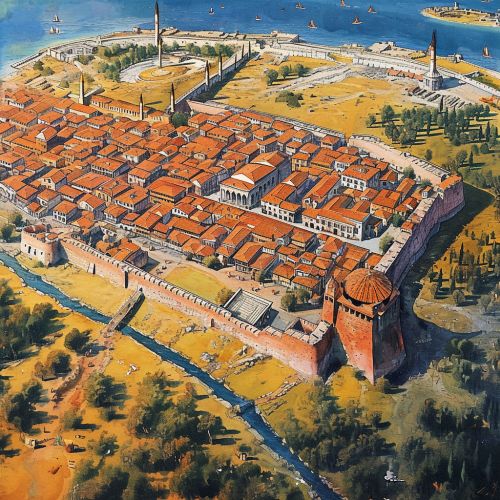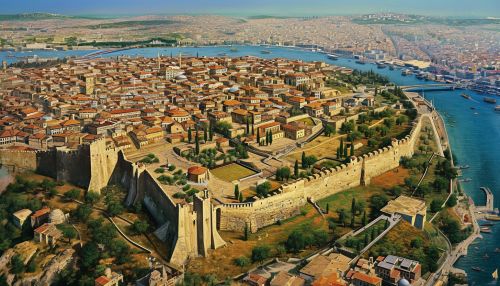Patriarch of Constantinople
Early History
The title of Patriarch of Constantinople is one of the most significant in the Eastern Orthodox Church. The Patriarch of Constantinople is considered the "first among equals" in the Eastern Orthodox communion, which recognizes the primacy of honor, but not the jurisdictional authority of the Patriarch.
The history of the Patriarchate of Constantinople dates back to the establishment of the city of Byzantium by Greek colonists in the 7th century BC. However, the Christian community in Byzantium, later renamed Constantinople, did not gain prominence until the 4th century AD with the rise of the Roman Emperor Constantine the Great.


Establishment of the Patriarchate
The Patriarchate of Constantinople was officially established at the First Council of Constantinople in 381 AD. The council was the second ecumenical council of the Christian Church, following the First Council of Nicaea in 325 AD. The council confirmed the status of Constantinople as the new capital of the Roman Empire and elevated the Bishop of Constantinople to the rank of Patriarch.
The council's decision was based on the principle of "honor among equals", recognizing the Bishop of Constantinople's primacy of honor due to the city's political and economic importance. This decision was later ratified at the Council of Chalcedon in 451 AD, which further elevated the status of the Patriarch of Constantinople, placing him second only to the Bishop of Rome in the ecclesiastical hierarchy.
Role and Responsibilities
The Patriarch of Constantinople has several roles and responsibilities within the Eastern Orthodox Church. As the "first among equals", the Patriarch presides over meetings of the Holy Synod, the highest decision-making body in the Church. The Patriarch also has the responsibility of coordinating and promoting unity among the various autocephalous (independent) Orthodox Churches.
In addition to these ecclesiastical duties, the Patriarch of Constantinople also has significant administrative responsibilities. The Patriarchate oversees the running of the Holy Metropolis (dioceses) of Constantinople and the monasteries of Mount Athos, among others.
Influence and Authority
Despite the theoretical equality of all bishops in the Eastern Orthodox Church, the Patriarch of Constantinople has traditionally held a position of great influence and authority. This is due in part to the historical and cultural significance of Constantinople as the capital of the Byzantine Empire and the center of the Greek Orthodox world.
However, the authority of the Patriarch of Constantinople has been challenged at various times throughout history. The most significant of these challenges came from the Patriarch of Moscow, who claimed the title of "Third Rome" after the fall of Constantinople in 1453.
Modern Era
In the modern era, the Patriarch of Constantinople continues to play a crucial role in the Eastern Orthodox Church. The Patriarchate has been instrumental in efforts to promote unity among the Orthodox Churches and to engage in dialogue with other Christian denominations.
Despite the challenges and controversies that have marked its history, the Patriarchate of Constantinople remains a symbol of the enduring strength and vitality of the Eastern Orthodox tradition.
